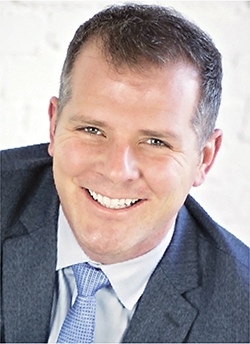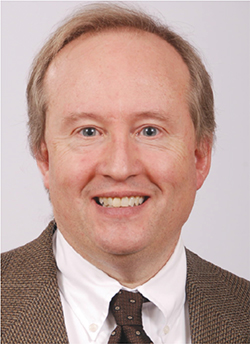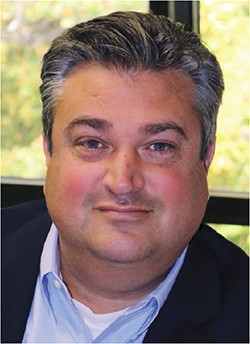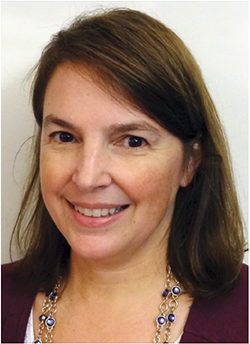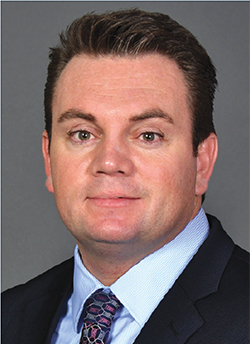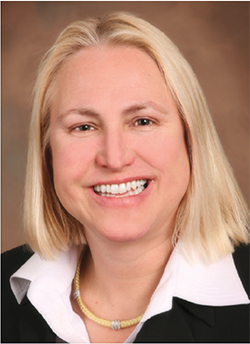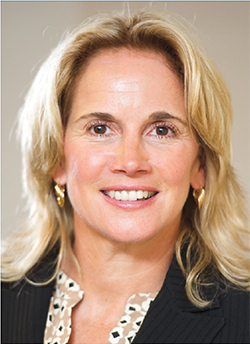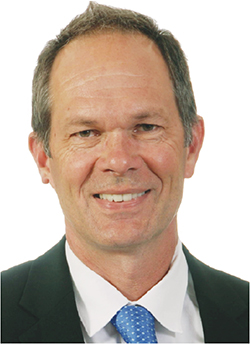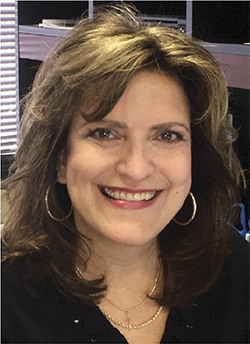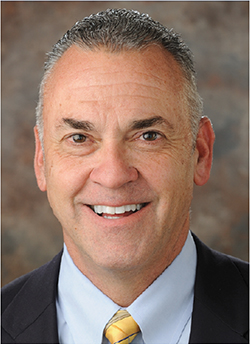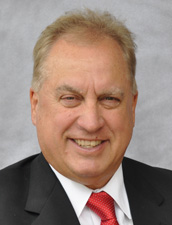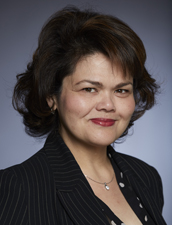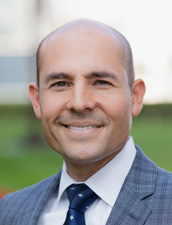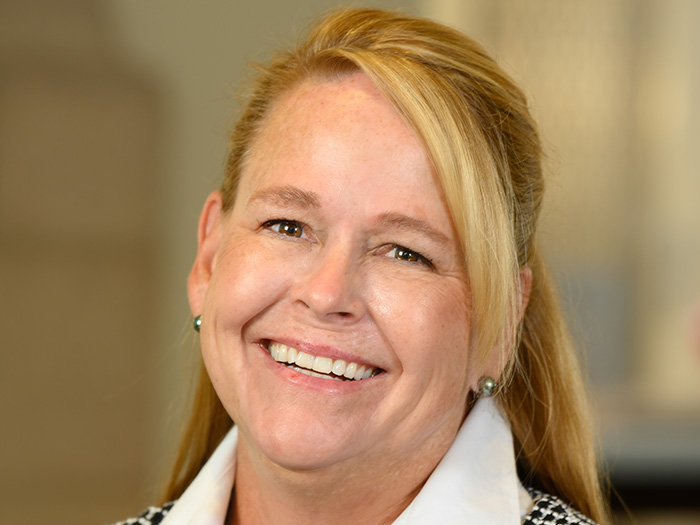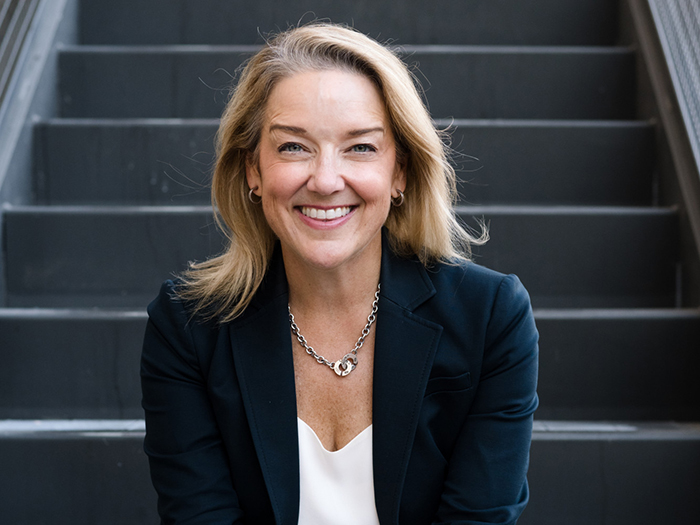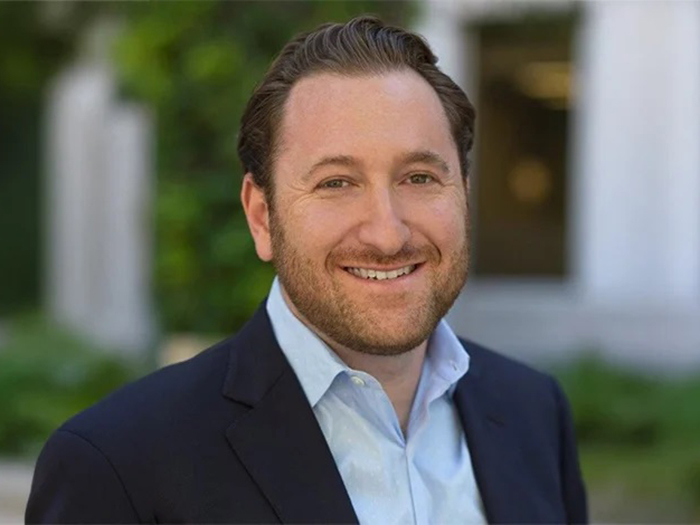2017 Power Broker
Employee Benefits
A Knack for Finding Unexpected Savings
One of John Byers’ clients had been going directly to a carrier for its elective benefits, but the outdated strategy caused its employees to pay up to four times the market price for an inferior product.
Byers, who is also director of sales, and his Aon team were able to save them an average of 35 percent on premiums while improving benefits by 50 percent. The broker also negotiated three additional benefits: telehealth services, employee advocacy and medical bill saver.
A new client told Byers that it had received a 49 percent increase on its medical plan. Byers and his team redesigned the plan, increasing the deductible of the primary coverage and subsidizing the difference with a secondary carrier, saving the client nearly $1 million.
One employee had her out-of-pocket costs for maternity care cut from $4,100 to $1,000, and 80 percent of employees spent nothing more than their premium contributions on their medical costs in 2016.
“I think John does a better job asking questions that really get to the heart of the issue, helping those clients that I work with save in places that they didn’t even think they could,” said Colby Jubenville, senior consultant at Brent Consulting Group. “Secondly, he helps them manage risk in ways in ways they didn’t think was possible.”
“John is really a great guy to work with,” said a benefits director at a restaurant company. “He has the company and the employees’ best interests at heart, and he does a really good job in our space.”
Solid Strategies for Global Challenges
One of Jeff Clymer’s clients recently separated from a large U.S. company and needed to create new global retirement plans. The challenge was meeting certain financial objectives in the allocation of unfunded pension liabilities across over 100 pension plans in over 25 countries. The solutions had to vary by country and the concentration of employees in each country.
Specific challenges included legal restrictions; assets that couldn’t be transferred between plans; defined benefit plans that couldn’t be efficiently provided; and new funding vehicles that had to be established.
Where defined benefit plans could not be efficiently delivered, Clymer and his team developed alternative arrangements to deliver comparable benefits. When future benefits were provided as defined contribution, the defined benefit obligations were not shifted to the new company. Due to the design of these plans and the various stakeholders involved, there were many challenges as the team balanced cost with acceptance of the new designs.
“This was a huge effort … and Jeff’s expertise and knowledge was instrumental in ensuring we met critical deliverables and milestones in record time,” said the client’s director of compensation and benefits.
“Jeff has the ability to help us strategize, work through the business transition that we’re doing throughout the organization, how that impacts our employees, presenting options we could take to mitigate that,” said the client’s VP, global benefits and employee mobility.
Tops at Turning Rate Trends Around
Colombo worked to create two self-funded programs for his clients: the N.J. RX Shared Services Program and the N.J. Dental Shared Service Programs. Clients’ percentage rate increases in the N.J. RX Shared Services Program fell to single digits, even below forecasts.
By joining the NJ Dental Shared Service program, all groups reduced administrative expenses by 30 percent. This program also implemented a transparent three-tier provider network that reduced claim expenses by 15 percent to 20 percent. The three-tier network is unique to the program and was not offered to the school boards in previous years.
“I’m thrilled with the services provided by Joseph Colombo,” said a board secretary and business administrator at a K-12 school district. “He does an excellent job negotiating renewal rates with the carriers on our behalf. During our collective bargaining, Mr. Colombo provided the board numerous alternative strategies to introduce what would help the district reduce their health insurance costs.”
“He’s very attentive to clients’ demands,” said Derek Jess, board secretary and business administrator at Perth Amboy Board of Education. “He and his team have always provided great service and he always makes sure the client gets the best possible rate for their insurance benefits.”
Guiding Clients Toward a Better Path
A restaurant client of Lori DeVore wanted to move from a 100 percent employer-paid retirement benefits program to a culture where employees share the responsibility of saving for retirement.
Through the use of a new 401(k) plan, a new nonqualified supplemental executive retirement plan, and the existing profit-sharing plan to provide five years of bridge benefits to qualifying employees, DeVore and her team were able to achieve the client’s goal of reduced and predictable cost, and an average benefit replacement level of 90 percent or more for employees who participate fully in the new 401(k) plan.
A prospect in the health care industry was funding its three pension plans at the minimum required level. This allowed the prospect to utilize its cash resources in other parts of its business, but it resulted in underfunded pension plans and large required premiums to the Pension Benefit Guaranty Corp. DeVore showed the organization that it could lower overall costs and increase cash flow if it borrowed money to fully fund the plans immediately instead of contributing only the minimum required contributions. The prospect hired Aon and is currently seeking loans to fully fund the pension plans.
“Lori DeVore is one of the most dedicated representatives that we have ever worked with,” said Nina Maratto, director of benefits at White Castle Systems Inc. “She is accurate and consistent, and we can rely on her without fail. She knows parts of our benefit plans better than we do; she truly is an extended member of our team.”
Better Solutions for Maritime Challenges
Dale Finn’s cruise line clients are required to comply with challenging maritime regulations regarding medical treatment for employees.
For example, if crew members need offsite medical attention in a country of which they are not a citizen, they must be met at the port-of-call with an armed guard and provide a visa letter to be escorted off the boat and treated. Cruise lines also must completely cover any care over a certain threshold, other than pre-existing conditions.
For Royal Caribbean International, Finn negotiated modifications to in-network coverage to limit care only to providers that met specific cost and quality-of-care guidelines. He also arranged for care and medical housing for non-U.S. citizen crewmembers’ families in locations around the United States, eliminated duplicate billing, and ensured the publicly traded company would receive claims reports weekly.
Overall, these changes resulted in $2 million in savings.
“Dale has been very consistent in facilitating significant contractual arrangements we have with UnitedHealthcare Global,” said Lee Thomassen, senior director, health administration, health services, at Holland America Group. “Dale provides reliable and objective information regarding what might or might not affect our business initiatives. He has a high level of integrity — he has been first-rate in following up on issues.”
“Dale is extremely knowledgeable in his field,” said the assistant general counsel of a cruise line. “Whenever we have questions, he has answers.”
Sharing a Vast Wealth of Knowledge
Karin Landry worked with the Labor Department last year to get clients’ ERISA-prohibited transaction exemptions (PTE) approved and re-establish the expedited process for securing a PTE.
Additionally, Landry oversaw a comprehensive research project focused on the evolution of each benefit captive and the lessons learned by the employers as they went through the process, implementation and maturity of the captive.
Landry subsequently penned a white paper about the results and gave a number of speeches globally about her findings. The project demonstrates to employers that captive funding of ERISA-covered benefits is more attainable than they may have thought.
Last year, Landry also authored a comprehensive chapter on employee benefit funding for the American Bar Association for its upcoming member resource on captives, as well as a “Captives 101” book and other white papers covering self-funding risk, medical stop loss in captives, captives for mid-sized businesses and cell captives.
Landry is a professor of employee benefits and a member of the finance committee for International Center for Captive Insurance Education at the University of Vermont.
“Karin Landry and her team have provided superior service to me and my company,” said the manager of risk financing at a business travel and meeting management firm. “Karin is an expert in her field and her expertise proved vital to the success of our insurance program.”
From Complicated to Mission Accomplished
One of Barbara Ludwig’s clients was merging with a large national company with a different health care program.
The client had one consumer-directed plan with a health reimbursement plan, with high employee participation and salary-based contributions. The national company had five medical plans, including a CDHP/HSA with almost no participation, and various contribution strategies. Ludwig and her team helped restructure contributions and the plan was simplified on a national level as a dual-option program, which included a CDHP/HSA — resulting in more than $400,000 in savings for the client.
For a private equity client, Ludwig and her team were tasked with setting up a benefits package for a company the firm was acquiring — without any claims information, just a census. She was forbidden from communicating with the seller’s employees until after the close of the deal, the day before benefits had to take effect.
Ludwig partnered with the PE firm and seller to gain an understanding of the employee population and factors that could affect the program and coverage. Ultimately, she was able to secure a comprehensive benefits program that met the client’s financial objectives.
“She goes above and beyond, getting back to me with follow-up on total business requirements, even though she doesn’t have to,” said a director of a medical management company. “She has excellent rapport with her clients and she does her job well. She’s got great initiative, great expertise and ideas — she has saved our company a lot of money.”
Pioneering Exceptional Savings
Dan McFall invented the “spot rate” method for pension and retiree medical accounting, which gives a more precise measure of interest and service costs by applying the specific spot discount rates along the yield curve used to determine the benefit obligations to relevant projected cash outflows.
The SEC confirmed the use of the spot rate method for companies that use a yield curve to select their traditional discount rates assumption, and companies are now seeing roughly a 15 percent to 20 percent reduction in their interest and service costs. For some large organizations, 2016 expense reduction is in the tens of millions or even hundreds of millions of dollars.
“Adoption of the new methodology resulted in a savings to our P&L in excess of $2 million in the year of adoption, and it will continue to yield annual savings for us on an ongoing basis as well,” said one client’s vice president of internal audit.
“Two words that describe Dan are ‘extraordinarily innovative,’ ” said James Beckert, executive director, pensions and benefits, at Verizon Communications. “Dan has multiple clients in different industries but remains an expert in mine, keeping abreast of changes in law, politics, accounting and, of course, actuarial sciences that could impact my company.”
“Dan helps us identify opportunities, regulatory changes, and provides clear counsel on changing industry trends,” said an accounting manager at an equipment manufacturing company. “We view Dan as a great partner.”
Keeping Clients’ Best Interests at Heart
Carol Morgan co-administers the Missouri Educators’ Trust, a self-insured employee benefits trust for participating Missouri school districts. Eighty school districts are trust members, 11 of which were acquired in 2016. While many Missouri school districts have seen large, even double-digit, medical renewal increases in recent years, the trust saw only a 1.3 percent medical renewal increase for 2015-2016, no increase for 2016-2017, and boasts roughly $15 million in reserves.
“She is a retired educator, so she has a better understanding of our organization,” said Phil Cook, superintendent of Carl Junction R-I School District. “We formed a trust in the state of Missouri and she has been the broker who has put that thing together.
“She is so thorough and if you have questions, she is going to get back to you quickly with answers. She is one go-getter, and very approachable in this area.”
Added Michael Mason, superintendent of the Reeds Spring R-IV School District: “Carol Morgan always has the client’s best interests at heart. For her (and co-administrator Doug Jenkins) it’s not about how much money they can make by trying to push products that aren’t necessary.”
“She’s my go-to person whenever I have a potential claim or need to add a client,” said Roger Barnes, superintendent of the Chillicothe R-II School District. “She’s very responsive — her level of customer service is exceptional.”
Delivering a Holistic Approach to Success
To get NFP Broadcasting’s medical plan renewal increase from 35 percent to 10 percent, Jim Patton collaborated with the carrier to find cost savings, such as allowing infusion therapy to be administered at home. He also negotiated discounts for using facilities other than hospitals for imaging, diagnostics and lab work.
Patton convinced NFP to invest in wellness, and also recommended a spousal exclusion rule. Moreover, employees who completed wellness initiatives and were tobacco-free were able to get a plan equal to what they paid in 2016.
“Jim has earned the trust of our senior leadership team by delivering accurate cost projections within our defined budget and leveraging his book of business and relationships with the carriers to get us the best deals possible and competitive benefit offerings for our employees,” said Lynda Wilkes, NEP’s senior vice president, human resources.
“Not only does Jim have the executive presence and perspective, but he is also able to work effectively with my team and has a great relationship with one of the largest health insurers in the Western Pennsylvania market — which allows him to be effective in negotiations,” said Patrick Rooney, chief financial officer at Net Health.
“Jim stressed that our leadership should be 100 percent behind health and wellness and all of the initiatives done with our vendors and partners,” said Brian Llewellyn, director of human resources at Concordia Lutheran Ministries. “By improving these relationships, it’s helped to negotiate better costs and concessions.”
A Win-Win for Clients and Employees Alike
Cross Media Works’ fully insured medical plan was facing an 18.5 percent increase for 2016, at the same time the company was tasked with bringing together different benefit programs and contribution philosophies after acquiring another firm.
Robert Petcove and his team recommended a self-funded solution and an alignment of the medical plan programs. The West Coast operation used nine plan designs, while the East Coast operation had one — and neither had a high-deductible health plan. The company chose two plan options with lowered employer contributions: a PPO and an HDHP with a health reimbursement account.
Petcove and his team also helped the company implement vision, dental, group life, disability and telemedicine. Cross Media is now working on a wellness strategy that supports employee physical health, financial health, career health and community health.
The company is projecting up to 10 percent in premium savings for the year, and even more in 2017.
“Rob has saved my company a tremendous amount of money,” said CFO Jonathan Batt. “The company can now control the rising costs of health care to its employees by passing some of those savings back to them.”
“We get nothing less than 24/7 deliverables from Robert,” said Charles Sidner, vice president, corporate benefits, at Penske Automotive Group Inc. “He and his team have not let us down and they are a pleasure to work with.”
Beating the Odds
The Anchorage School District’s load for health care is roughly $19,000 annually, which exceeds the income of many employees.
Courtney Touw and his team have defied the odds and held ASD’s medical spend to below 4.5 percent, a third of Alaska’s average of roughly 13.5 percent.
Central to this success is the creation of a no-cost primary care network, which will open in 2017, with convenient locations, same-day or next-day appointments, health coaching and telemedicine. Touw and his team also created health care referral networks to encourage and pay for travel to the lower 48 states, where procedures are one-third the cost with significantly higher-quality results.
As a result of the team’s efforts, delivery of primary and preventive care increased 37 percent, employee out-of-pocket costs fell 20 percent and renewals were down 5.5 percent.
“It’s been a pleasure to work with him,” said Mike Dinges, the district’s executive director of contract administration.
“Courtney and his team provide superior customer service,” said Ron McFadden, chief financial officer of Zones Inc.
“He helped us navigate the Affordable Care Act and has done so deftly. He worked with us on plan design to reduce costs without impacting the quality or integrity of the benefit offerings to our team members. He provides solutions and constantly introduces innovative ideas to drive down costs.”
Finalists:

